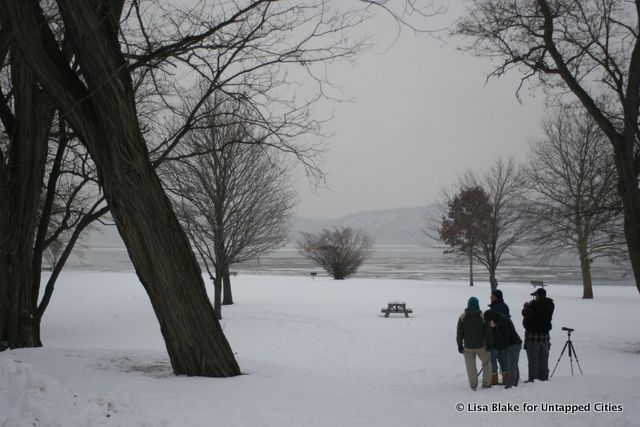10 Giant Menorahs That Will Light Up for Hanukkah in NYC
From Brooklyn to the Bronx, we’ve rounded up the most exciting giant menorahs that will light up throughout the next eight evenings!


When we think of bald eagles, usually Alaska or the National Parks come to mind. But with the recent news that bald eagles are making a comeback in New York City of all places, we headed out to the Teatown Lake Reservation’s EagleFest this past weekend, where over 150 bald eagles spend the winter along the Hudson Valley waterways. As ice cover freezes across the region, the birds are attracted to the open water of the Lower Hudson River. In fact, this area is such a great location to view bald eagles, it is designated as an Important Bird Area (IBA) by the Audubon Society and has one of the highest wintering concentrations of bald eagles in the lower 48 states.

The event is headquartered at Croton Point Park, adjacent to Metro-North’s Croton-Harmon train station, but takes place throughout the Hudson River Valley. At Croton Point Park, heated tents are set up and participants can attend lectures, raptor shows, and view displays from over thirty of the area’s environmental organizations. Attendees can also join guided birding walks through Croton Point Park. This mix of events allows attendees to learn more about the star of the day–bald eagles–but also to learn more about other birds and wildlife in the lower Hudson Valley.

EagleFest also features ancillary eagle viewing sites such as at Bear Mountain State Park, Boscobel House and Gardens, and New Croton Dam. Here, attendees can look for bald eagles with the naked eye and with telescopes that are set up by knowledgeable birding volunteers and Teatown staff. These locations can be reached by car or through the event’s organized bus tours.

We were most interested to learn how the Department of Conservation, US Fish and Wildlife Service, and Cornell University collaborated between 1976 and 1989 on the Bald Eagle Restoration Program. This program relied on two methods: release of young non-native eagles through hacking (hand rearing to independence) and relying on the state’s only remaining native pair to foster young. Some surprising facts: Many of the young non-native eagles come from Alaska, and bald eagles don’t develop their signature white head and tail until they are mature at five years old and have a wingspan of 6-8 feet.
Subscribe to our newsletter